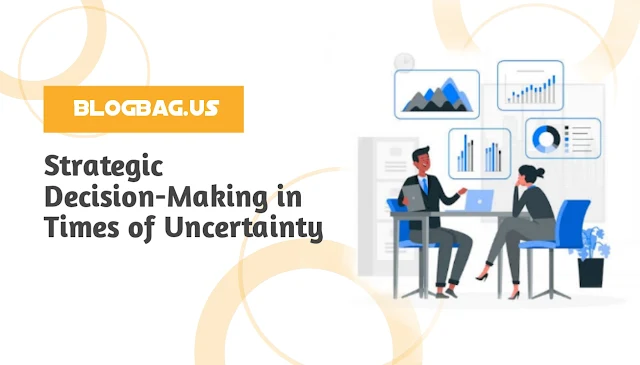Strategic Decision-Making in Times of Uncertainty
In today's rapidly changing business landscape, uncertainty has become the new norm. External factors, such as global economic shifts, technological advancements, and unforeseen events like the COVID-19 pandemic, can disrupt even the most well-established organizations. In such times of uncertainty, strategic decision-making is crucial for a company's survival and success.
The Nature of Uncertainty
Uncertainty can take various forms, and its sources are diverse. Economic uncertainty may stem from fluctuations in markets, trade tensions, or regulatory changes. Technological uncertainty arises from rapid innovations that can make existing products or services obsolete. Sociopolitical uncertainty can be driven by changes in government policies, public sentiment, or geopolitical conflicts.
Strategic Decision-Making Framework
Effective strategic decision-making in times of uncertainty requires a well-defined framework:
1. Environmental Scanning
Constant monitoring of the external environment is essential. This includes tracking economic indicators, market trends, technological developments, and political changes. Tools like SWOT analysis and PESTEL analysis can help organizations assess their current situation.
2. Scenario Planning
Developing multiple scenarios for different potential futures is a valuable strategy. By considering a range of possibilities, organizations can be better prepared for various outcomes. This approach minimizes the shock of unexpected events.
3. Data-Driven Decision-Making
Access to data and analytics is critical. Businesses should leverage data to understand customer behavior, market dynamics, and operational efficiency. Data-driven insights enable informed decision-making and proactive responses to changes.
4. Agility and Flexibility
Strategic plans must be adaptable. An agile organization can quickly pivot in response to unexpected developments. This flexibility allows for the adjustment of tactics without compromising long-term goals.
Case Studies
Several companies have excelled in strategic decision-making during uncertain times:
1. Apple Inc.
Apple's ability to anticipate and adapt to technological shifts, such as the transition from personal computers to mobile devices, has been a key factor in its success.
2. Amazon.com
Amazon's data-driven approach, coupled with a focus on customer-centric solutions, has allowed the company to thrive in the ever-changing e-commerce landscape.
3. Tesla, Inc.
Tesla's innovative approach to electric vehicles and sustainable energy has positioned the company as a leader in an industry marked by technological uncertainty.
Conclusion
Strategic decision-making in times of uncertainty is not merely a reactive process but a proactive one. By adopting a structured approach that combines environmental scanning, scenario planning, data-driven insights, and flexibility, businesses can not only navigate uncertain waters but also uncover opportunities for growth. Successful organizations view uncertainty as a chance to innovate and emerge stronger on the other side.


Post a Comment for "Strategic Decision-Making in Times of Uncertainty"